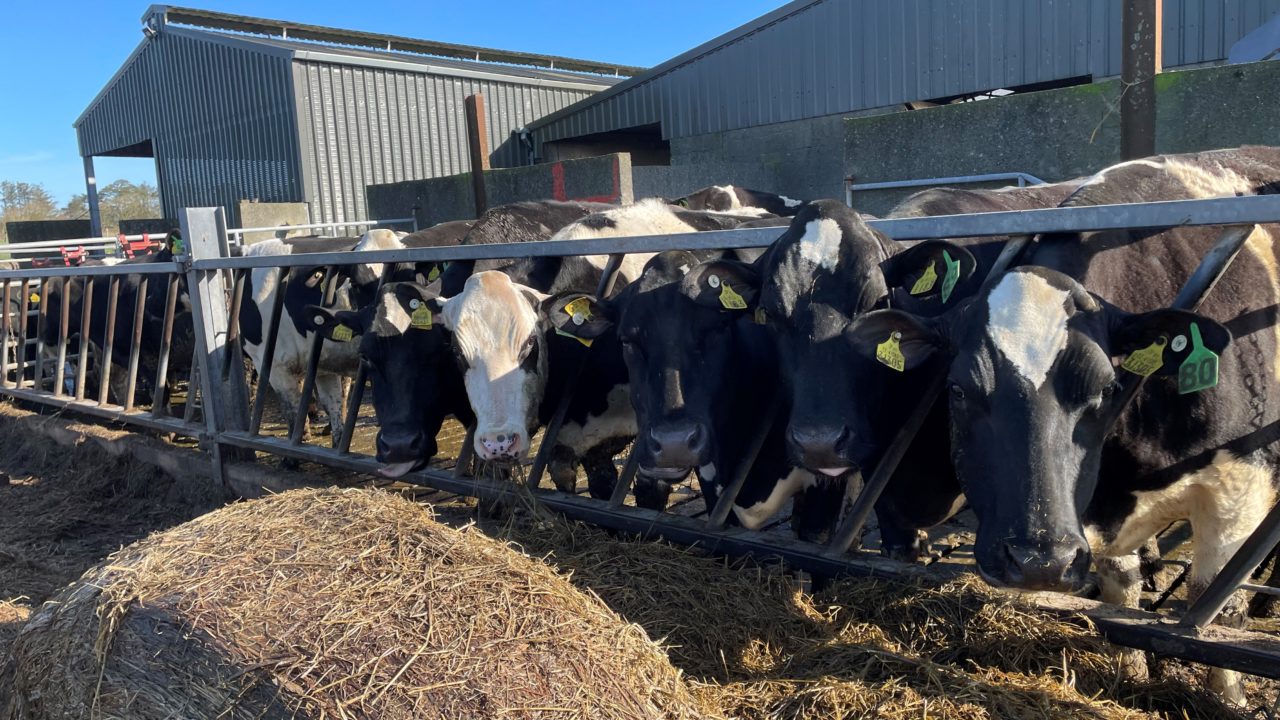A displaced abomasum is not an uncommon occurrence during the calving season on dairy farms, and will present itself in a similar way to ketosis.
It usually occurs within the first four weeks post calving, but the exact cause is not known.
Calving is a risk factor, with 90% of the cases being a left displaced abomasum (LDA).
It occurs when the abomasum moves from its normal position and becomes trapped between the rumen and abdominal wall.
Prevention
When a cow is pregnant, the abomasum is displaced from its normal position by the expanding uterus, but once the cow calves, the abomasum is free to move back to its normal position.
If it does not return to its normal position, it results in a displaced abomasum.
Farmers should ensure that animals are being given high-quality feed to ensure sufficient rumen fill.
Some other steps to take include: ensuring cows are in the correct body condition score (BCS); providing high-quality feed; ensuring there is enough feed space and slowly increasing concentrates after calving.
Displaced abomasum
It is important that you are closely monitoring cows, so that cases can be detected as early as possible.
Again, cases often present similar to ketosis – with cows going off their feed, becoming depressed and reduced milk yields.
Symptoms for a cow with a right displaced abomasum (RDA) can display more severe symptoms, such as colic, elevated heart rates, scant faeces and diarrhoea.
Decreased milk yields and going off their feed is going to be the first signs of an issue for many farmers.
On some farms, there is now milk yield monitoring systems, so cows should be somewhat easy to detect – but on many farms that technology is not in place.
Instead, you will have to pay close attention to the cows when eating.
Leftover concentrates in the trough can often be a good indication for farmers – this will be easy to spot in parlours were individual troughs are in use.
Cows that are showing symptoms need to be seen by a vet to determine if ketosis or displacement abomasum is to blame.
Your vet will be able to determine if a displaced abomasum is the issue by using their stethoscope to listen for the presence of a ‘pinging’ noise. This noise is caused by the gas-filled abomasum.
